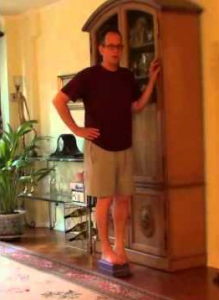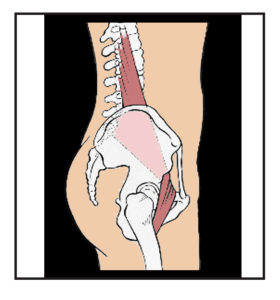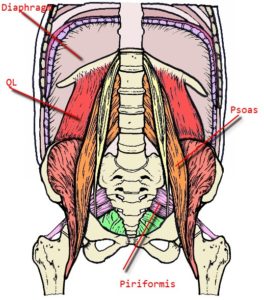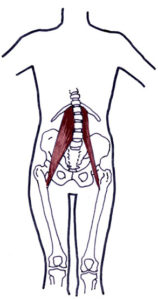 Foot on a Block is probably the pose I use most for releasing the psoas.
Foot on a Block is probably the pose I use most for releasing the psoas.
It is a gravitational release that simply lets the leg hang out of the hip socket pulling on the psoas in the process.
This exercise is not limited to your house.
If you have hip or groin pain when walking, feel free to stop at every corner and dangle one foot off of the curb while holding on to a lamp post.
When I bike I do this exercise while riding, standing up, and letting one leg hang. I almost always do this exercise when I rollerblade as well.
I’ll skate for about a mile and then hang my leg releasing the psoas. It is like turning the engine on for whatever exercise you do.



Releasing the Psoas: Foot on a Block
- Place a block about a foot from a wall.
- Step the left foot up on the block, allowing the right foot to hang down between the block and the wall. Place your right arm on the wall to help you stabilize the upper body.
- Keep the hips level and rotate the inner thighs back and apart—stick out your butt a bit, and feel like you can let the leg go from the base of the rib cage to the top of the psoas.
- Once you are comfortable with the leg hanging out of the hip, you can move the leg half an inch forward and back as slowly and steadily as possible. Half an inch is a very short distance.
- Let the leg dangle this way for 30 seconds or until the standing hip has worked enough.
- Switch sides and tune in to which side is tighter. Do the second side for the same length of time as the first side.
- Repeat a second time on the tighter side.
Releasing the psoas is essential to developing a balanced body. This all-important muscle is often not on the radar of doctors and practitioners who can’t point to a reason for your pain. The psoas might be the key that unlocks years of suffering from pain and trauma.
